The Glidecam HD-2000 is a smaller and more affordable version of the famous Steadicam, which is a gimbal for the camera introduced in the movie The Shining.
This gimbal makes the travel of the camera by an operator on foot very smooth compared to a handheld look. We’ll see in this review if this product, which was released in 2001, is still relevant today.
OUR SPONSOR OF THE DAY : NEONNIGHT.FR
What is a gimbal?
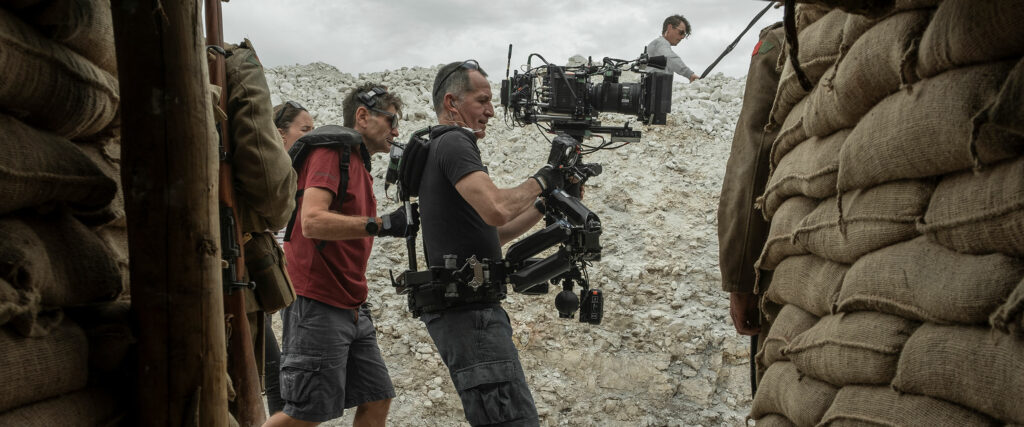
A gimbal is a device for keeping an instrument such as a compass or chronometer horizontal in a moving vessel or aircraft, typically consisting of rings pivoted at right angles.
A gimbal is therefore in the video industry a physical stabilization device outside of a camera that helps smooth all the parasitic movements created by the natural motion of our body when moving.
The principle of a mechanical gimbal is not too far from the anatomy of a chicken. Mercedes has hilariously used this reference in a commercial.
Why use a gimbal?
In this case, a gimbal is a device to keep your camera straight or steady while moving. If you ever walk around filming with a camera, even an iPhone, you probably know that unless you have some form of stabilization, the footage will shake so much that the viewer won’t be able to focus on the image.
Smoothness and stability are choices that a cinematographer makes to make the footage look more fluid and give a lush aesthetic to camera movement while tracking a character.
Sometimes a handheld look might convey the idea that the footage was filmed by a person. So there’s definitely a sensation of being present in the scene and following some events that are real, like in a documentary.
Why use a Steadicam?
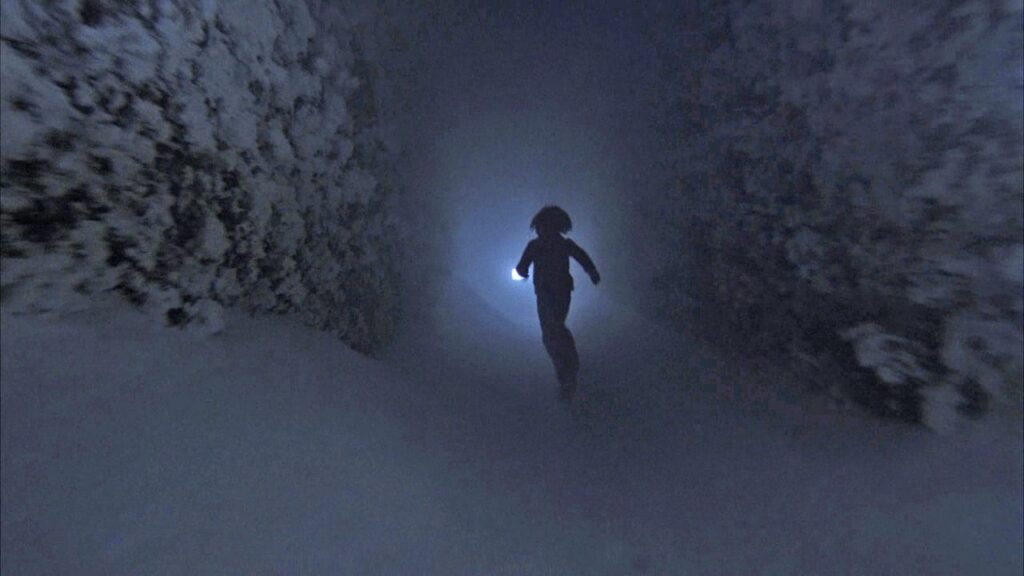
Each gimbal has a different effect on the viewer. Steadicams use mostly mechanics and gravity, so the movements coming out of this form of gimbal are very natural and feel like the camera floating around, with a bit of natural tilt and roll while corning.
It think this Steadicam are the most high-end gimbal and require a very experienced operator to get some good footage. The learning curve is quite steep, and it’s quite physically demanding to run a Steadicam all day, especially with larger cameras.
Steadicams are the most natural stabilizers in the sense that you won’t be distracted but carried by the camera movements.
Compared to a motorized gimbal?
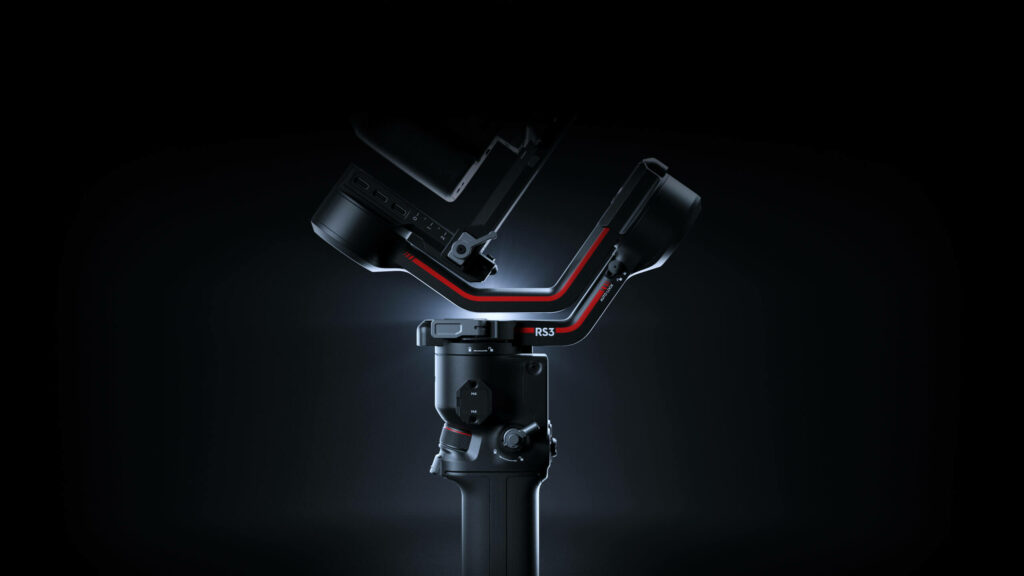
Motorized gimbals have a totally different feeling to them. They feel more robotic and less natural, even though they tend to be more precise.
The learning curve for a motorized gimbal is quite easier than for a steadicam. When well balanced, even a regular person can handle it.
Those gimbals also have the advantage of being motorized, so you can basically control each axis of the camera with a joystick.
Some movements, such as rotating the camera’s axis in briefcase mode, are close to impossible with a Steadicam, even with the newer Trinity.
Steadicams are quite heavy since they need counterbalance, whereas motorized gimbals don’t need as much counterbalance thanks to the motors. They are also easier to balance for a beginner and easier to operate.
Motorized gimbals are more likely to hold a lower payload; that’s why it’s rare to see a vest on a motorized gimbal, whereas a vest with an arm is a must for a Steadicam.
Steadicams don’t need batteries though I don’t think you’ll ever have a problem with this.
Prices
Glidecams like the HD-2000 tend to be slightly cheaper than their motorized counterparts, at around 400 euros. The price has, honestly, greatly been reduced. Today, a DJI RS3 costs around 549 euros.
Keep in mind that Glidecam is an American brand made in the USA, whereas the DJI RS3 is obviously made in China.
I would say that you can find a cheap Chinese Steadicam like a gimbal for around 200 euros or less, but beware when it comes to mechanics; you don’t want to choose the cheapest material and construction.
My experience using the Glidecam HD-2000
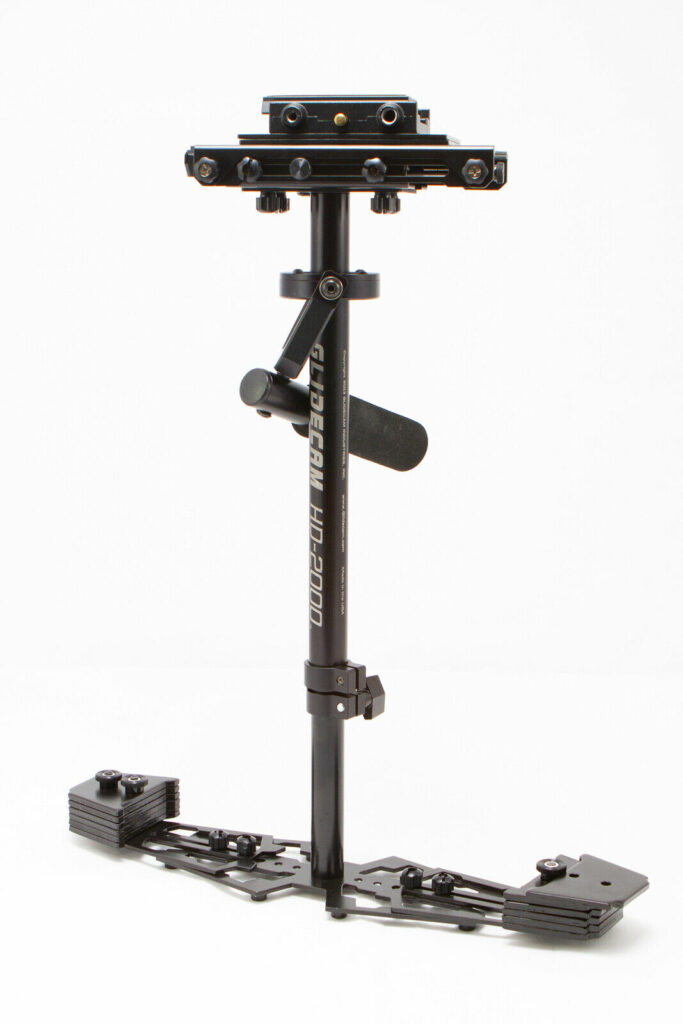
I bought this gimbal when I started photography with a 5D Mark II. I got this gimbal in the used market for less than 200 euros with all the weights and two screws missing that happened to be non-compulsory.
The Glidecam HD-2000 is very well built. Everything is metal; it’s fairly heavy with the camera and weight.
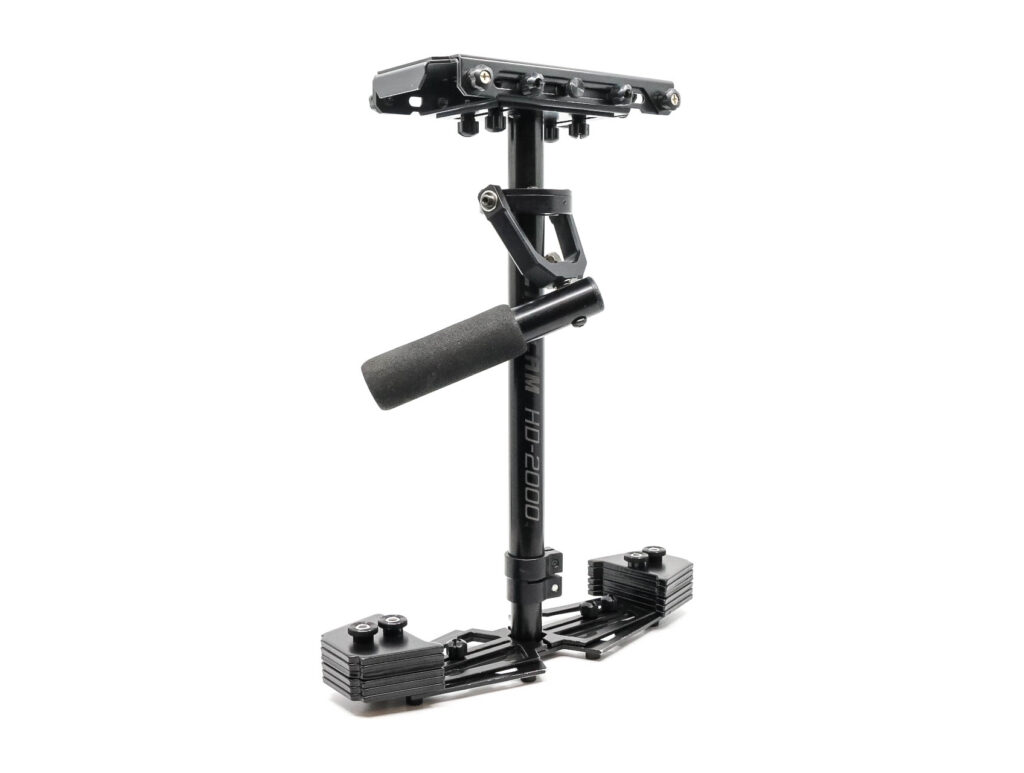
The payload is limited to between 0.9 and 2.6 kg, compared to the maximum 3kg payload of the DJI RS3.
Balancing the Glidecam HD-2000
Since this device is quite old, the system to balance the camera isn’t as ergonomic as the newer products.
It works with a plate that can be adjusted front-back and left-right for the camera to be balanced on its axis. The issue is that you literally have to unscrew multiple screws to adjust each side to test the gimbal.
At least you have rotating knobs to precisely adjust the two axes of the plate. Although you have to remember which way to rotate these knobs,
I’ll be honest, balancing this for the first time was quite challenging. I think now, with more experience, I would be faster, but still, since it often takes multiple attempts to get it right on each side, this circus can last forever.
I can’t even imagine if you need to switch between lenses and rebalance the gimbal all the time.
If balancing the plate is quite straight forward and logic, balancing the gimbal to rotate on it’s axis so the camera comes back to its normal position in around 2 full seconds is something very counterintuitive.
On this note, you’ll need to install a Manfrotto quick release plate to fix your camera quickly in the same spot. Trust me, you won’t have the will to remove the entire plate every time you want to use the gimbal.
The length of the main shaft can be extended, and the position of the food holding the counter weight can be adjusted as well.
If you include the number of counterweights you can put in, these require tons of adjustments just to balance a camera on a gimbal.
The hardest part is the lack of markings on these adjustment points to at least remember your settings.
Operating the Glidecam
Operating a glidecam is hard; you need to hold the glidecam handle on one hand, usually the strong hand, and use the opposite hand to hold the main shaft, but just slightly.
The opposite hand will basically control the pan and tilt of the camera. Then, just like any gimbal that doesn’t have a vertical axis, you’ll need to do the ninja walk, which is basically bending your knees, getting your bum out, and walking smoothly from heel to toe.
Everyone who starts with a Glidecam will have these balancing movements in their footage. It will take weeks or months of practice before you can get rid of these parasitic movements.
Compared to the newer version the Glidecam HD-Pro
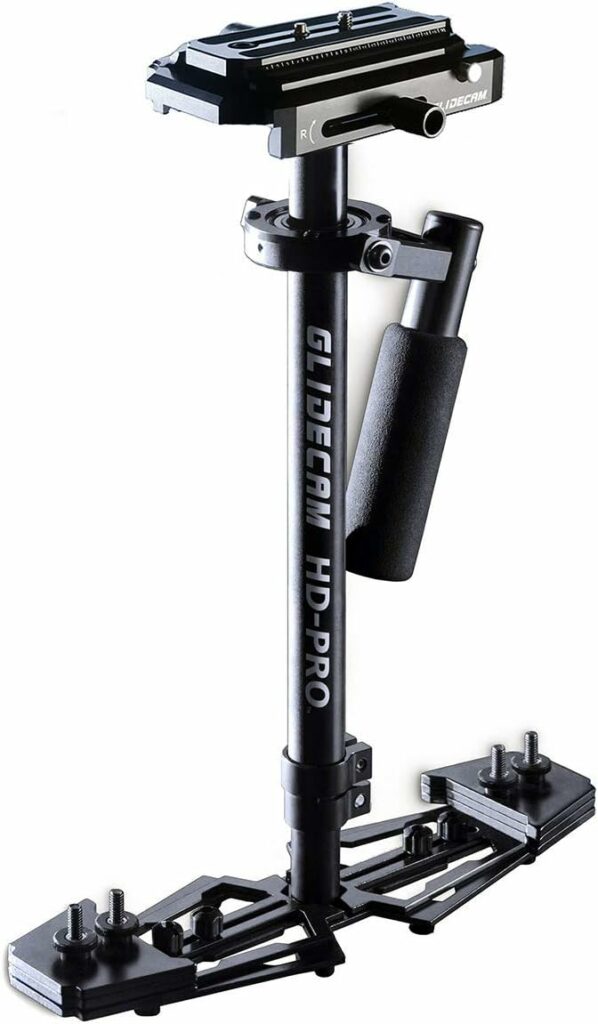
The Glidecam HD-Pro is the updated version of the HD-2000. It uses the same base but has been ergonomically improved in every possible way.
There is an integrated quick release plate compatible with fluid heads such as the Manfrotto 502. The time for fiddling with the innumerable screws and knobs is over.
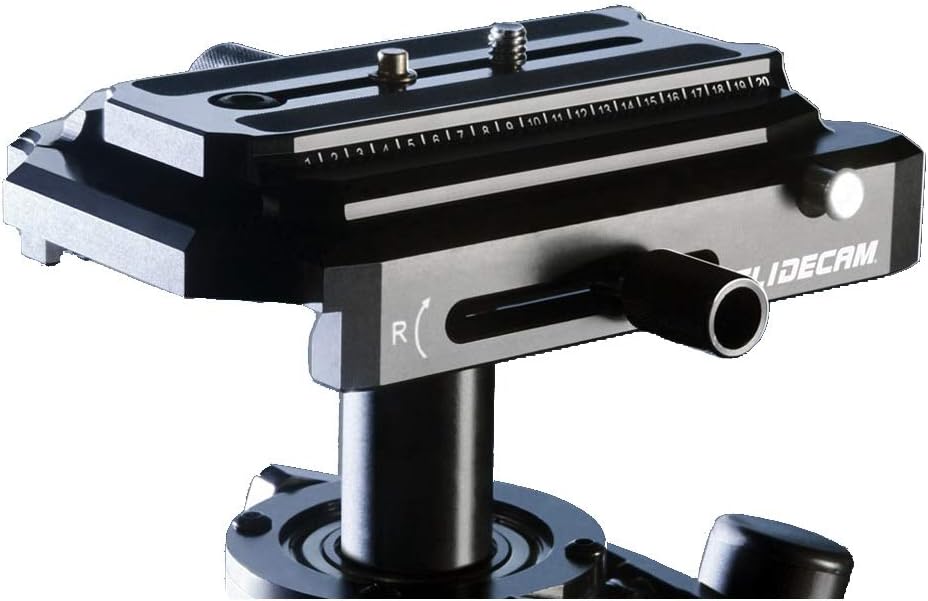
This time, there’s only one knob and one screw to tighten for each axis. This is a much better design that will make you much faster on set.
The maximum payload has been revised to 4.5 kg, which is great for using heavier setups.
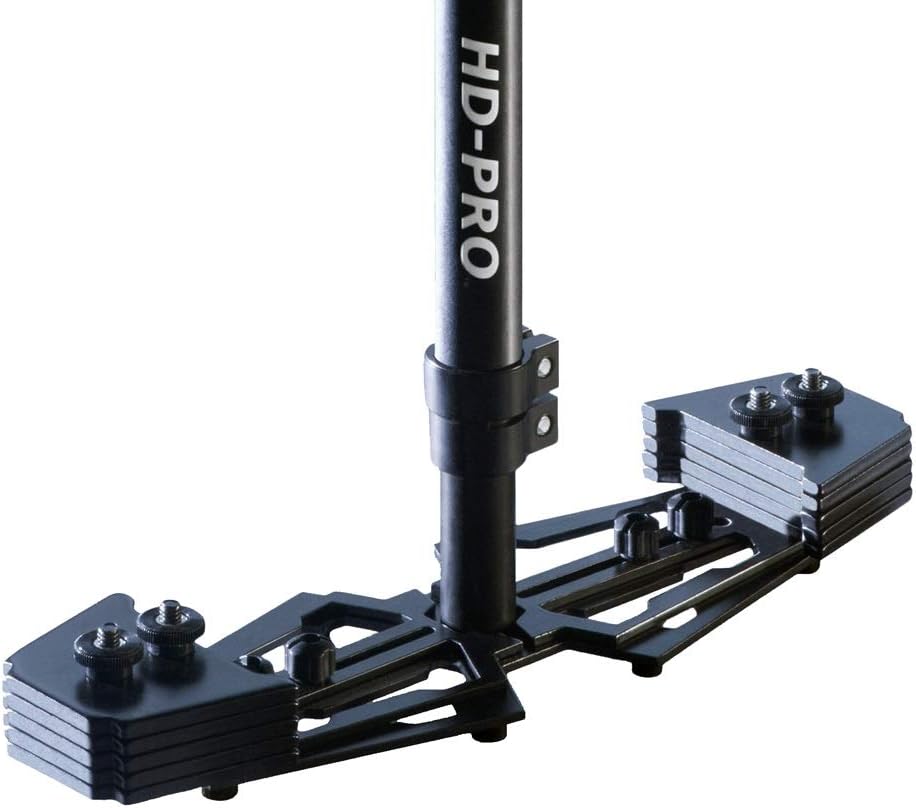
The base is quite similar to the older version; I do not see any improvements here. To be fair, I think this part was already good.
OUR SPONSOR OF THE DAY : NEONNIGHT.FR
Verdict
7.9 out of 10.
The Glidecam HD-2000 is a good product to introduce you to Steadicam-like gimbals. They’re quite inexpensive on the used market, and they are very sturdy, so they should basically last forever.
This first version wasn’t the most ergonomic when it came to balancing, but since then they have released a newer version, the Glidecam HD-Pro, which is easier to setup and balance.
If I had to choose again, I would definitely go for the latter version. I think the real choice comes between a motorized gimbal and these.
I think owning both is definitely the way to go since they offer a very different experience to the viewer. If I had to only buy one, I would get something like the DJI RS3.
It’s much easier to operate and not that much more expensive. You can also do some movements you’ll never be able to do with a Glidecam, and you can use it as a motorized head as well.
If I really need the Steadicam feel, I would rather pay a Steadicam operator directly to make sure the shots are perfect, since, let’s face it, this is a real job that not everybody can do.
Informations
Glidecam HD-2000
Official Website: https://glidecam.com
Glidecam HD-Pro: https://glidecam.com/product/glidecam-hd-pro/
Our Video Production: https://www.neonnight.fr/en/



GIPHY App Key not set. Please check settings